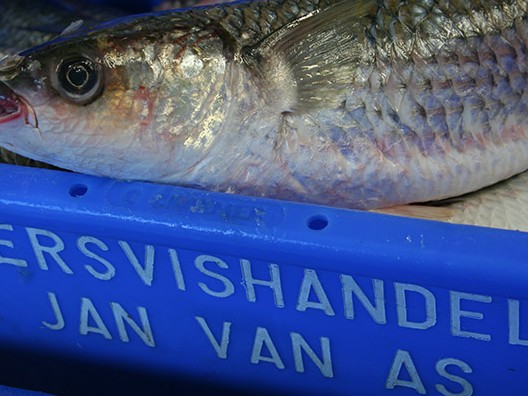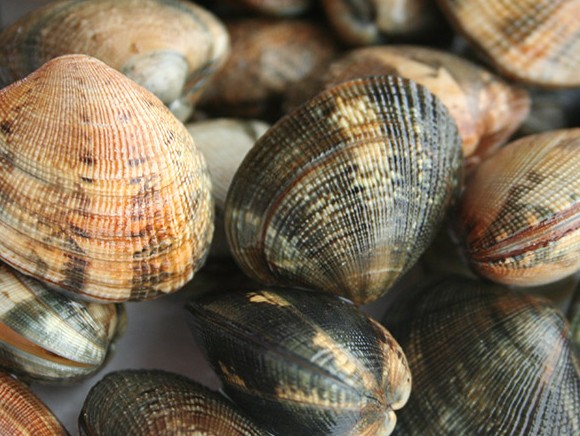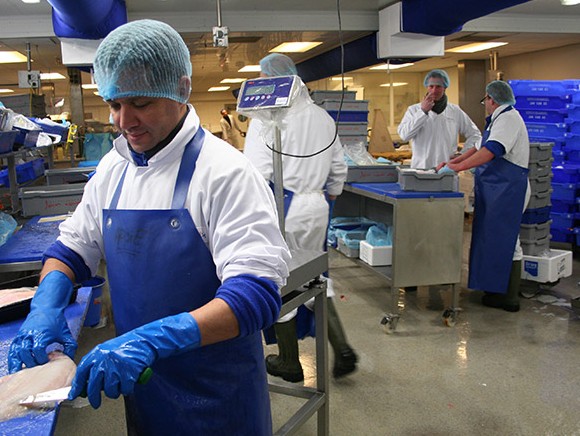
What started more than 60 years ago as a stall on Amsterdam’s Albert Cuyp market has grown into an impressive business. The company called Versvishandel Jan van As handles over 4,000 tons of fresh fish each year. Sustainability is embedded throughout the entire organisation, from the company’s seasonal offerings to how its facilities are cleaned.
Over the years, the business has evolved from a market stall run by founder Jan van As and his brother Jaap into an impressive company that includes a production facility and an innovation facility in Amsterdam plus a traditional smoking facility in nearby Monnickendam. The company supplies a wide and high-quality selection of fresh fish and seafood to a large number of retail and foodservice customers. Despite having upscaled in recent decades, the company – which today has 150 employees – has retained its traditional working methods. “And the Van As family is still very much involved in the business,” says Wijgert van As, grandson of Jan. At the family-owned company’s innovation and inspiration centre called ‘Visit’, located at the Food Center Amsterdam site, Wigert enthusiastically explains more about the evolution of the business. In the meantime, the venue fills up with applicants for a cookery programme who are about to set to work in one of the kitchens. It seems that Jan van As does much more than merely trading in fresh fish. Wijgert describes a number of the company’s activities: “Our own-label products arose from the desire to find a use for our residual flows. Two innovative chefs from well-known restaurants developed the products in close consultation with our customers. Our product range includes bisque, for example, and Breton and Asian fish cakes.”

The fish company also developed the Vis&Seizoen (‘Fish&Season’) initiative aimed at fundamentally improving the sustainability of fish consumption and fish products in the foodservice sector. This initiative’s activities include providing information and training to customers and tailoring the company’s own fish offering to the relevant season. Wijgert: “We don’t sell fish caught in the eel season. For example, you won’t get plaice from us between mid-December and late April. That’s how we do our bit to maintain plaice stock levels. We offer sustainable alternatives in that period instead, such as skrei (a type of cod). And it’s working – there is growing awareness of the importance of seasonal fish among our suppliers and our customers alike.”
So fish company Jan van As is a driving force, and that is apparent in other areas of the business too. For example, the firm has set up the Vis&Inspiratie (‘Fish& Inspiration’) network in which around 120 members – chefs and restaurant owners – meet four times a year to gain inspiration from trends and innovations in all kinds of areas (not just fish-related). Next on the agenda for the association is a ‘trend tour’ of Palermo.
Extra activities like these may not be a fish company’s core business, but this level of engagement is typical of Jan van As. The common thread running through all it does is sustainability, and this gained official recognition in 2013 when the firm won the DAM Prize, an award for Amsterdam’s greatest sustainability pioneer. Wijgert continues: “Sustainability is in our DNA. For us it’s a logical part of our entire approach – from the fishing methods used by our suppliers to our packaging materials. And our fish is transported in trucks fitted with solar panels which generate energy for the refrigeration system.”

And even when the fish is almost ready to be delivered to a restaurant several miles down the road, Jan van As still adheres to its sustainability principles; the production areas are disinfected in a sustainable manner too. The concept used is Nocospray, in which a liquid disinfectant called Nocolyse is vaporised into a dry mist to disinfect all the objects and equipment in a room. A turbine blows the liquid into the room at high pressure, creating a dry vapour that produces oxygen radicals and eliminates microorganisms. Wijgert: “Whereas liquid disinfectants only reach the surfaces, Nocospray finds its way into the machinery.” He was wildly enthusiastic right from the start. “The results of the trials we ran here were terrific. We’ve been using the method in all our production areas ever since. We use it daily in our smoking facility because the smoking is done cold and there’s a high risk of bacterial growth. In the other areas we now use it just once a week; we were able to reduce the frequency once we’d got the bacterial development under control.”
Wijgert explains why the concept, which has been launched in the Netherlands by the company Simpel Desinfecteren, is such a good fit with the Jan van As approach: “It’s an innovative, user-friendly and cost-effective method and the liquid is biodegradable. As a family company we want to be future-proof, and a concept like Nocospray supports us in that aim.”
Source: © Jan van As